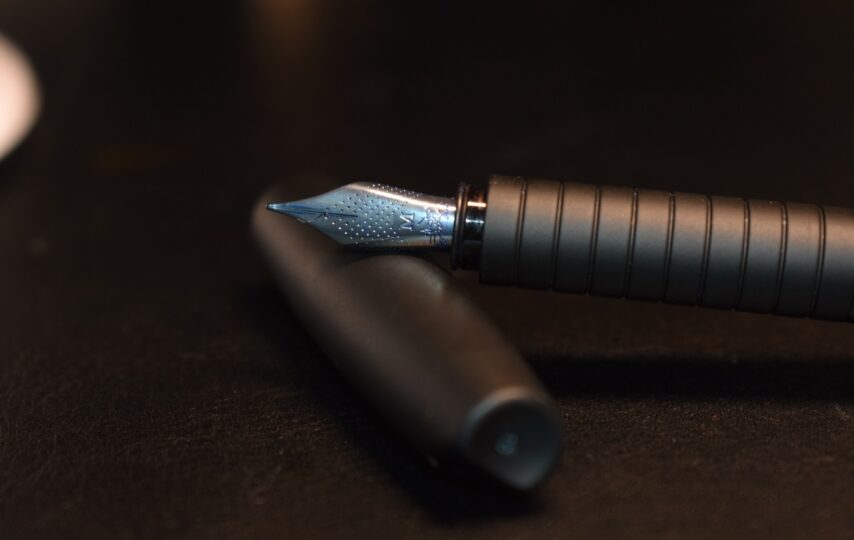As digital technology changes, many people are finding that they want to make the switch back to fountain pens. This includes some journalists and writers who missed writing in ink on paper. But how do you find the right pen? To help you decide, we’ve put together a list of questions and answers about what makes a great fountain pen, as well as our brief thoughts on why it’s worth giving up your trusty ballpoint pen for a more traditional one.
What Are The Benefits Of Using A Fountain Pen?
A fountain pen is a type of writing instrument that uses a cartridge filled with ink to produce written output. They are often considered more pleasurable to write with due to the smoothness of the ink flow and the lack of need for pressure. Some people also find fountain pens more aesthetically pleasing than ballpoint pens.
One of the main benefits of using a wooden fountain pen is that ink is retained in the pen longer than with a ballpoint pen. This means you can write longer without having to refill your pen as often. Additionally, fountain pens do not require any pressure to write, making them ideal for those who suffer from hand cramps or tendonitis.
Another benefit of using fountain pens is their ability to create finer lines than ballpoint pens. This is due to the fact that the ink flows through the pen more smoothly and reaches your paper evenly. As a result, you are able to write down smaller details and have less difficulty reading what you have written.
How To Choose A Fountain Pen
If you’ve ever been hesitant to pick up a fountain pen because you’re not sure what to look for, this guide is for you! In this article, we will outline the different types of fountain pens available on the market, as well as provide some tips on how to choose the perfect one for your needs.
When it comes to choosing a fountain pen, there are a few things to keep in mind. First, decide what type of writing experience you want. If you are new to fountain pens and want an easy way to transition from paper to ink, try a ballpoint pen. If you prefer the feel of ink flowing through your fingers and enjoy precision writing, choose a fountain pen.
Secondly, consider what type of paper you will be using your pen with. Fountain pens work best with smooth surfaces like paper or cardstock. If you plan on writing on thicker paper or textiles, consider using a brush pen instead.
Next, consider your budget and what features are important to you. Some factors that can affect price include material used (fiber tip vs metal), size and shape (converter vs non-converter), and filling system (cartridge vs converter). Features that may be more important to you may include weight and style (plain or ornate), ability to use various inks (concentrates or cartridge/converter compatible), and price point.
Common Types of Fountain Pens
There are a variety of fountain pens on the market, each with its own unique features and benefits. In this tutorial, we’ll introduce you to some of the most common types of fountain pens available, and explain their benefits.
Ballpoint Pens
Perhaps the most common type of pen in use today, ballpoints are simple but efficient writing instruments. They use lightweight ink that is absorbed by a rubber ball stored at the tip of the pen. When you want to write, you simply hold the pen between your thumb and first two fingers and squeeze the ball to fill it with ink. To make a new stroke, you release the ball and start again at the bottom of the previous letter.
The biggest downside to ballpoint pens is that they typically run out of ink quickly. Also, because they rely on pressure to work (rather than gravity), they’re not very accurate when used on hard surfaces such as paper. Finally, many people find them difficult to hold for long periods of time due to their small size and slippery grip.
Conklin Pens
One of Conklin’s key selling points was its ability to create thick lines with minimal effort. The company’s pens used a special formulation of ink that was less likely to leak or smudge, thanks in part to its proprietary cartridge system. While Conklin pens are no longer produced commercially, several companies (including Edison) produce similar pens using different names and designs.
Common Pens and Their Uses
In the world of writing, pens are an essential tool. Whether you’re a student, a professional, or just someone who likes to write things down, you need to be able to use pens to produce legible text. There are many different types of pens out there, and each has its own advantages and disadvantages. In this article, we’re going to introduce you to some of the most common types of pens and show you how they can be used in your writing life.
Ballpoint Pens
One of the most popular types of pens is the ballpoint pen. These pens use a small metal ball that is filled with ink and then pressed against paper to create written words. Because these pens don’t require any pressure from your hand to create written words, they’re great for people who have trouble with fountain pens because they don’t require as much pressure to produce smooth lines on paper. Additionally, ballpoint pens are relatively cheap, which makes them a good option for people who only write occasionally or for short notes.
Fountain Pens
If you’re looking for a more luxurious writing experience, you should consider using a fountain pen. Fountain pens are made up of several parts: the barrel (the part that holds the pen), the cap (which covers the barrel), and the nib (the part that writes).








